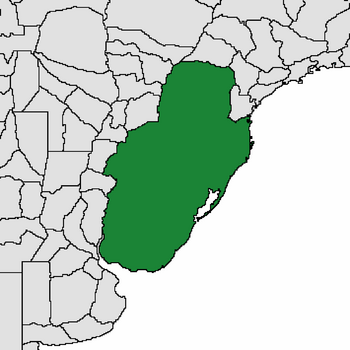Integralist Republic
Jump to navigation
Jump to search
Federative Republic of Trenado República Federativa de Trenado | |||||||||
|---|---|---|---|---|---|---|---|---|---|
| 1932–1946 | |||||||||
| Motto: "Prosperidade é o Camiño Cara a Vitoria" "Prosperity is the Way to Victory" | |||||||||
| Anthem: Centinelas Trenadianas (English: "Trenadian Sentinels") | |||||||||
 Trenado's territorial extension | |||||||||
| Capital | Osorio | ||||||||
| Government | Authoritarian dictatorship | ||||||||
| President | |||||||||
• 1932–1946 | Roberto Gonzales | ||||||||
| Vice President | |||||||||
• 1932–1946 | Sebastián Melle | ||||||||
| Historical era | World War II | ||||||||
| 1 August 1932 | |||||||||
• New constitution | 13 November 1933 | ||||||||
• Voting liberalization | 30 June 1945 | ||||||||
• Constituent Assembly | 22 February 1946 | ||||||||
• Democracy restored | 1 January 1947 | ||||||||
| Currency | Trenadian real | ||||||||
| |||||||||
The Integralist Republic, also referred to as the Gonzales era or Second Trenadian Republic, was established on 1 August 1932 after a coup d'état organized by the National Army alongside the Integralist Union, with support from the Republicans. This time period consolidated Roberto Gonzales as president of the country until 1946, once the democratic system was officially restored and Donis Moreno's administration began. It also was characterized by centralized power, economic protectionism, anti-communism and anti-liberalism, being often regarded as a fascist government due to the noticeable influence of Benito Mussolini and Francisco Franco's policies.
| Part of a series on the |
| History of Trenado |
|---|
 |

